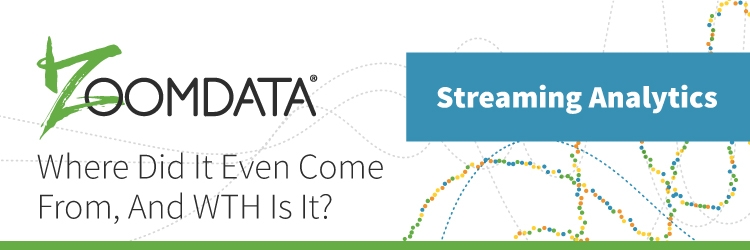Acting on Data While It’s in Motion
^THAT is what streaming analytics does—it’s all about real-time decision making. As defined by Dataversity, stream processing both analyzes and enables action on real-time data via continuous queries. By connecting to external data sources, streaming analytics enables applications to integrate particular data into the application flow, or, update an external database with processed information.
Let’s use the millennial way of brand interaction as a real-life example: our way of interacting with businesses is pretty much 100% digital, IBM explained. When we’re not happy with a service, we make it known online. If something’s wrong with our cable service, we will make it highly known on the service provider’s Facebook page until someone replies to our comment and fixes the problem. If we need a ride, we order it through a ridesharing service, and it better be there in no less than 5 minutes because anything more would be egregious. If we want to watch Stranger Things, we log onto Netflix and prepare for nonstop binging. Every aspect of our customer journey takes place digitally, because who wants to do anything by hand or go through a process?
Here’s the point: with all things digital, data is being generated constantly and consumers have the power. In response, businesses have had to change their customer strategy to meet their demands and grow. Here’s where streaming analytics comes in –with real-time personalization. While we as customers go on a journey to make a purchase, merchants using streaming analytics interact with us throughout the critical points of our purchase. They show us they know what we want and they make accurate predictions about timing and our level of interest because they have live data that indicates when to take action. However, if they weren’t using it responsively, they would miss opportunities to gain our loyalty (and our hard-earned dollars).
Streaming vs. Conventional Analytics: Peanut Butter and Jelly
Let’s do some quick differentiation between streaming and conventional analytics. Conventional analytics covers the history of a particular data set and gives you the opportunity to perform sophisticated modeling. Going back to the real-time personalization example, if you’re a member of Netflix, you’re giving them a pretty good idea of what kind of shows and movies you like to watch, especially if you’re using their like/dislike feature. Let’s say you’re a Stranger Things fan, and you like sci-fi and horror. The longer you use Netflix, the more accurate their content suggestions for you will be.
This won’t work for a scenario like ridesharing. If you engage with Lyft to order a car, they have to use real-time data to determine your location and the proximity of a driver to you. If they use conventional analytics, maybe they could give you some information about where you go most often, but they’re not going to get you very far in terms of actually leaving the house.
But together, streaming and conventional analytics are like PB&J; they complement each other by providing context for the other.
What Do We Get From Streaming Analytics?
Depends on what you’re using them for, but overall, relevant information that correlates with the present moment in time, nearly instantaneously. Questions answered, sandwiches delivered.
- Enable decision makers to act sooner
- Manage key performance indicators (KPIs) daily rather weekly or monthly
- Understand the root cause of problems more quickly
- Detect patterns that emerge across diverse data sets such as sales figures and weather variations
Want to know more about what streaming analytics is and why it’s important for you to explore? We’ve got your back. Check out our eBook, Streaming Analytics: Where Did it Even Come From, and WTH Is It?
